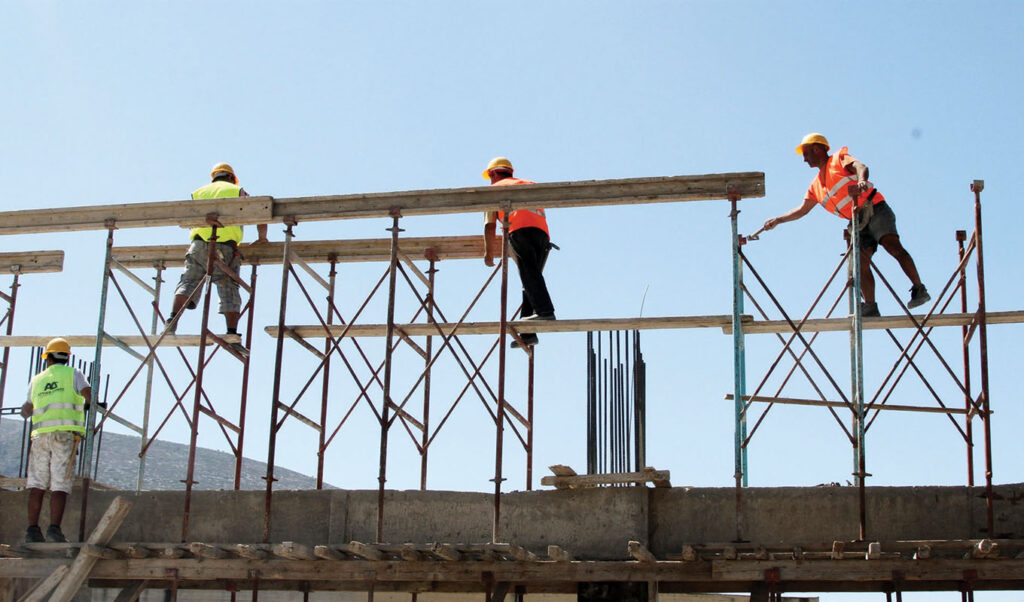After almost a year of uncertainty, the construction sector is attempting to get back on track. The recent opinion of the Council of State regarding the Presidential Decree of the Ministry of Environment and Energy puts an end, albeit temporarily, to the regulatory vacuum that had left hundreds of building permits in limbo. With the new framework, the environmental equivalent mechanism is officially introduced, a tool that aspires to bridge the gap between development and environmental protection. The Council of State decision gives the “green light” for advancing the Presidential Decree, provided that certain technical observations are incorporated. The Decree will define what constitutes “commencement of construction works” and will establish the framework for implementing Special Environmental Equivalent Urban Upgrading Plans (ΕΣΠΙΑΠ), the mechanism through which blocked construction projects will be able to proceed.
The basic idea is that every permit issued with the “bonuses” of the New Building Regulation (NOK), such as increased building coefficient or greater height, can be re-legitimized, provided the owner or contractor pays a special environmental fee. These funds will not go to the public treasury, but will be collected in an account of the Deposits and Loans Fund and will be allocated exclusively for urban environment upgrading projects. Interventions may include public space renovations, tree planting, restoration of listed buildings, demolition of illegal constructions, or actions for climate-neutral cities. Projects will be determined per municipality through the ΕΣΠΙΑΠ and will be funded with assistance from the Green Fund or private sponsorships.
Construction: permit categories and costs
The regulation concerns two categories of constructions: * Those that have been cancelled or are under judicial appeal, with a projected environmental fee of 8%. * Those included in programs like RRF or ESPA, where the fee increases to 15%. Approval for continuing works will pass through a filter: an opinion is required from KESYPOTHA and KESA, which will examine each case with technical, legal and economic criteria. The market, however, does not hide its concerns. The new system is characterized by industry professionals as “heavy and expensive,” as the fee is calculated based on objective value. For example, for a 100 sq.m. penthouse in an area with a zone price of €2,000/sq.m., the amount can reach €16,000, while for properties included in funding instruments the fee can exceed €30,000.
Next steps
The Supreme Court, although it approved the direction of the Decree, imposed a critical safety valve: before each ΕΣΠΙΑΠ implementation there must be an environmental pre-assessment to determine whether a Strategic Environmental Impact Study (SEIS) is needed. The Ministry of Environment and Energy must now adapt the final text before proceeding to issue ministerial decisions that will determine calculation and control details. Despite the progress, the picture remains unclear. Engineers and investors await final decisions to know whether permits that have been “frozen” can actually be activated. Delays have already caused losses of millions and intense stagnation in the sector. The discussion around the New Building Regulation appears unlikely to end soon. In practice, Council of State disputes and successive modifications have weakened legal security, deterring new investments. Market executives now consider a radical revision of the framework inevitable, with the drafting of a completely new, unified regulation that will balance development with sustainability. Local Urban Planning Schemes (TPS), although promoted as a solution, are moving at slow rates. Until they are completed, the sector will continue to operate with fragmented regulations, without clear prospects.
Meanwhile, the NOK case is taking on a European dimension. The European Court of Human Rights in Strasbourg accepted the appeal by Greek contractors seeking protection of building permits issued until December 11, 2024, regardless of whether work had begun. The acceptance of the appeal, which happens in only 5% of cases, is considered an indication that the Court recognizes the gravity of the issue and the possible violation of property rights. The trial is expected within the first half of 2026 and could create precedent for similar cases at European level. The coming period will be decisive. Whether the new regulation will constitute a real restart or another transitional stage depends on the speed and clarity of government moves. For now, construction holds its breath, waiting to see if the environmental equivalent will prove to be a lifeline or an obstacle.
Published in the MoneyPro supplement of Parapolitika newspaper




